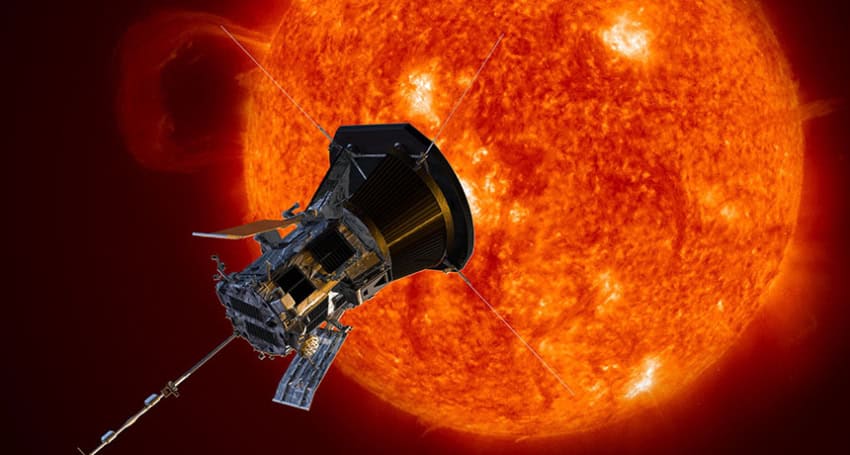On August 23, NASA is sending an unmanned spacecraft to the study the Sun. The US space agency’s Parker Solar-Probe (PSP) aims to use seven Venus flybys over nearly seven years to gradually shrink its orbit around the sun, coming as close as 3.83 million miles (and 6.16 million kilometers).
NASA has sent multiple probes to planets, natural satellites and asteroids alike all over the solar system but has sent none to the Sun. just that. Humans have studied other planets, meteors, asteroids, galaxies, nebulas etc but never a star, and the only feasible option we have is to go to the nearest one, the center of the solar system.
A god to some and a nuisance for others, the Sun definitely is a mysterious object that binds all the planets and keeps them alive. Looking directly at the Sun is challenging for our naked eyes without goggles, and even then we cannot see much.

Using Nasa’s special hardware on Earth and the ISS (International Space Station), the astrophysicists cannot study the Sun either. For instance, the answer to the burning question as to how was the solar system formed is anything but definite. Scientists have barely shrugged off it because the authentic facts are missing.
What do we know about the Sun?
But first, let’s talk about the atomic beast itself. What is the Sun and why is it so important. The Sun is around 4.5 Million years old, situated in the Orian Spur of the Milky Way galaxy. Before explaining further, it is pertinent to explain a little fact about our blue planet. The Earth has three layers, Crust, Mantle and the Core.
The topmost is the Crust, where we are, the middle one is a hot large layer called the Mantle and in the middle lies the Core, a hot firey ball that is the source of gravity and the magnetic pull.
The Core is the hottest, the Mantle is cooler and the Crust is the coldest. Makes sense right? Now the Sun, compiled of six layers, Corona, Chromosphere, Photosphere, Convective Zone, Radiative Zone and the Core. Each of the layers exists in varying temperatures, with the Corona and the Chromosphere being the hottest.

The Corona is compiled of Plasma, the fourth matter that most of us didn’t study at school. Here is the rundown; when you add energy to solid, it turns into liquid, with its particles separating slightly when you add more energy into it, the liquid turns into gas, with particles separating further and when you add more energy into gas, it turns into plasma.
The Sun consists of 91% hydrogen, its fuel, 8.9% helium and 0.1% heavier elements. In the Sun’s core, temperatures reach around 15,000,000 Celsius. This combined with the Sun’s gravity, which not only pulls all the planets but pulls dozens of dwarf planets, 170 moons and countless asteroids and comets, causes the Sun fuse hydrogen molecules to make helium (thermonuclear fusion) releasing energy in forms of radiation, electricity, solar wind, light and heat.
On Earth and some other planets the Sun magnetic field, caused by dark sunspots all over the sun, interact with the atmosphere, giving us the beautiful Auroras (Northern lights).
Why will the Sun not melt the spacecraft?
Enough about the Sun and its terrifying self, let’s come to the core question as to why would the Parker Solar Probe not melt? To start off, astronauts in space have two visors on their space helmet, one is a vacuumed that doesn’t let in or out anything, and the other is like sunglasses that prevents astronauts to be harmed by the Sun’s harmful rays, as they are not protected by the Ozone layer.
Similarly, the PSP will have a heat shield in front of the craft facing towards the Sun to reflect off any heat to keep the internal components cool in the back. Why won’t the heat shield melt?
Betsy Congdon from Nasa says, “The heat shield is made of a couple of different materials. One of them is carbon/carbon, which is a lot like the graphite epoxy you might see in your golf clubs or tennis rackets, but it’s been superheated.

The inside is a carbon foam which is another form of carbon (comprising about 97% air). It’s a very lightweight way of making a very strong structure”. Secondly, the Solar probe is an autonomous software that allows it to stay safe and cool behind the heat shield and keeping it pointed at the very optimal level.
Betsy says, “There are these things called the solar limb sensors, that are just poking out of the very edge of the shadow.
If those get illuminated, the spacecraft knows, ‘Oh, I’m going in the wrong direction’ and can actually right itself”. Finally, the Solar Probe is liquid cooled, much like computers, meaning that it circulates water to keep the solar cells from overheating.
The PSP will be visiting the outer layer called the Corona and will be within 4 million miles or 6.1 million kilometers of the Sun’s surface. So if you were wondering how would the probe protect itself from the nuclear explosions, it simply will not go as close.














